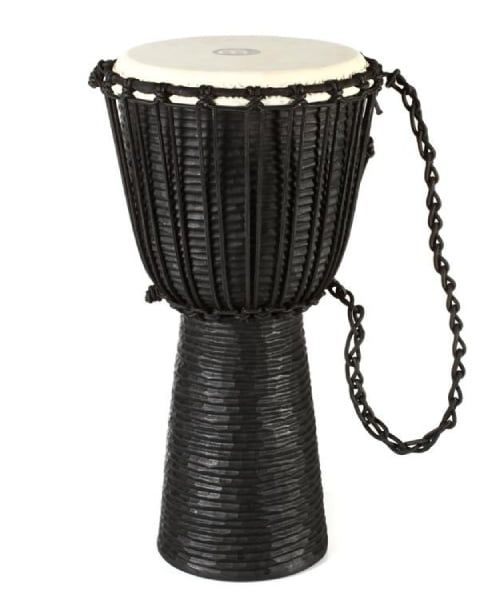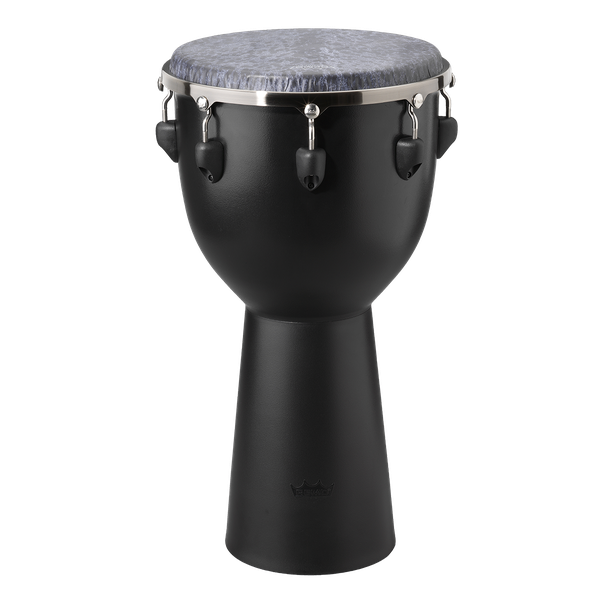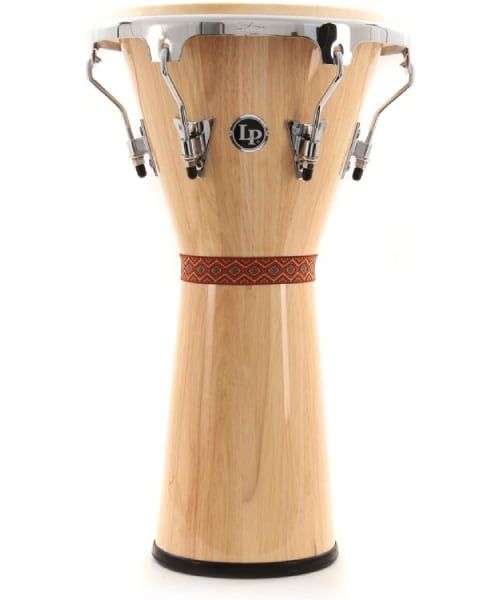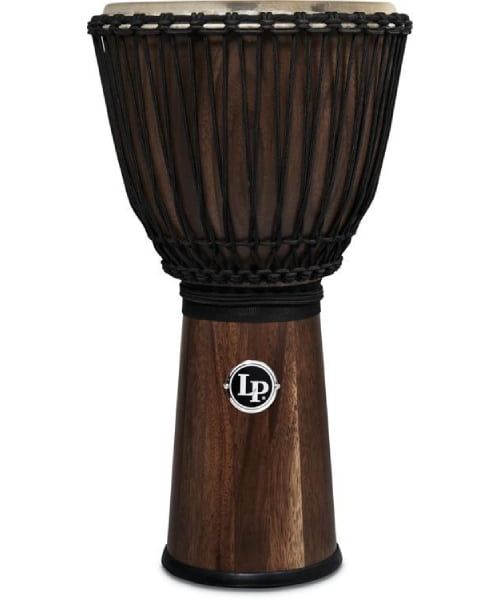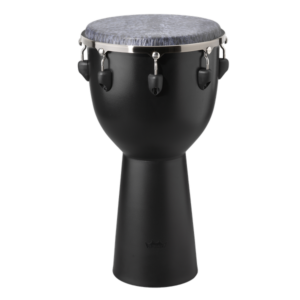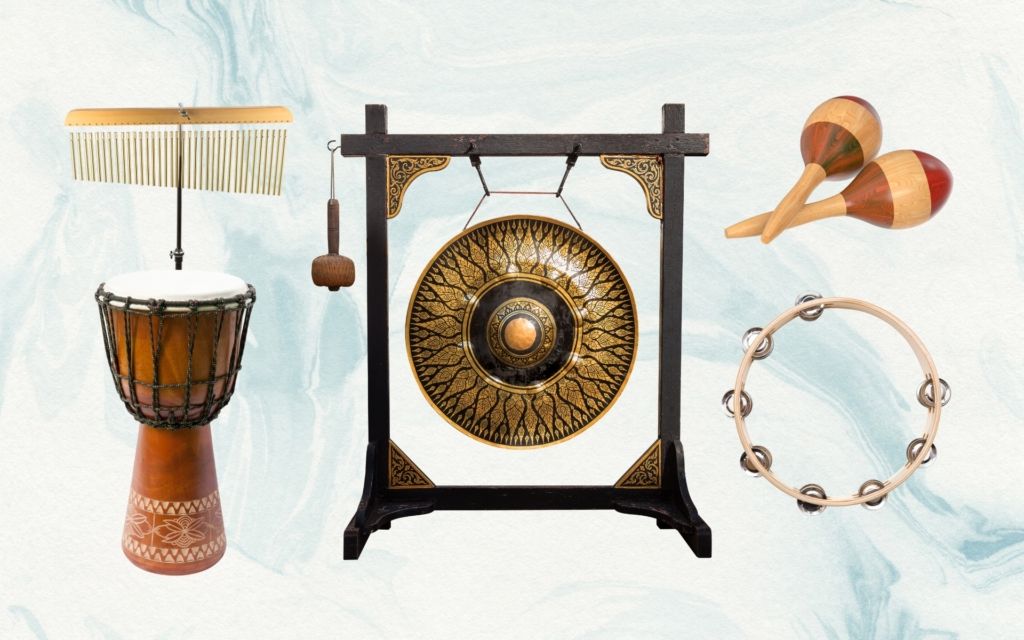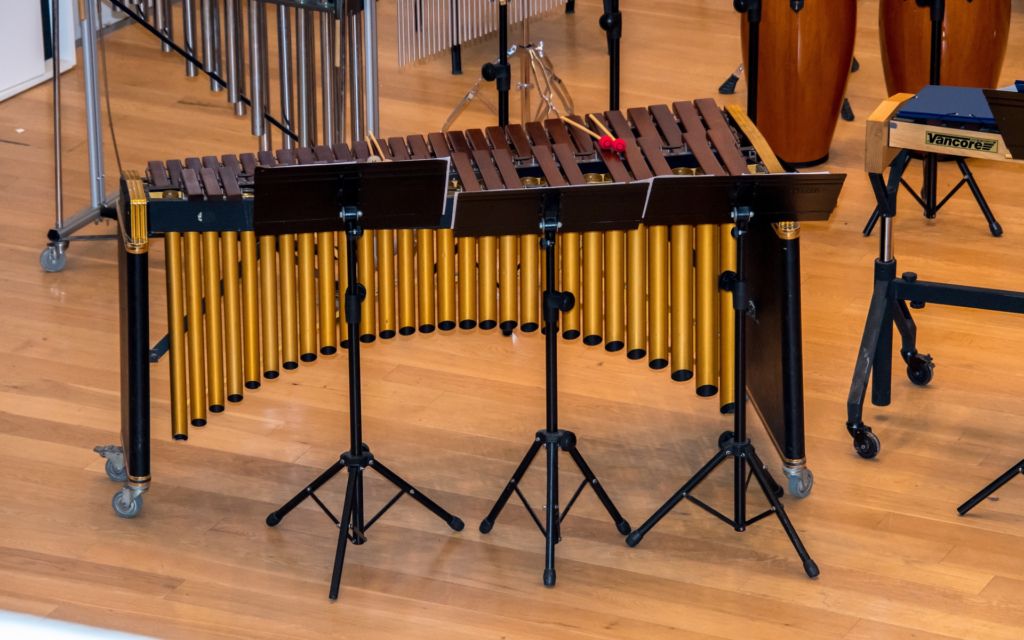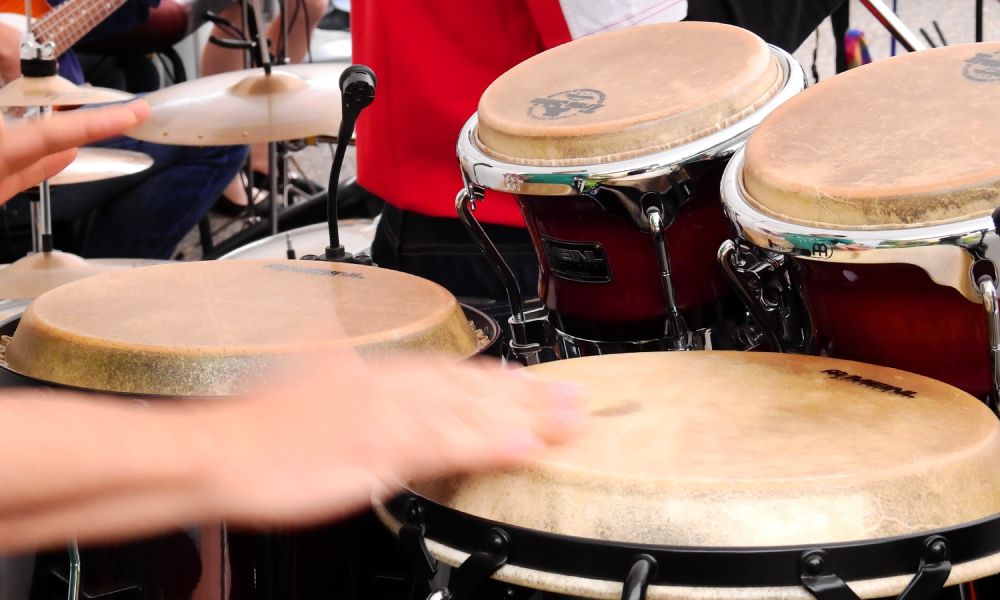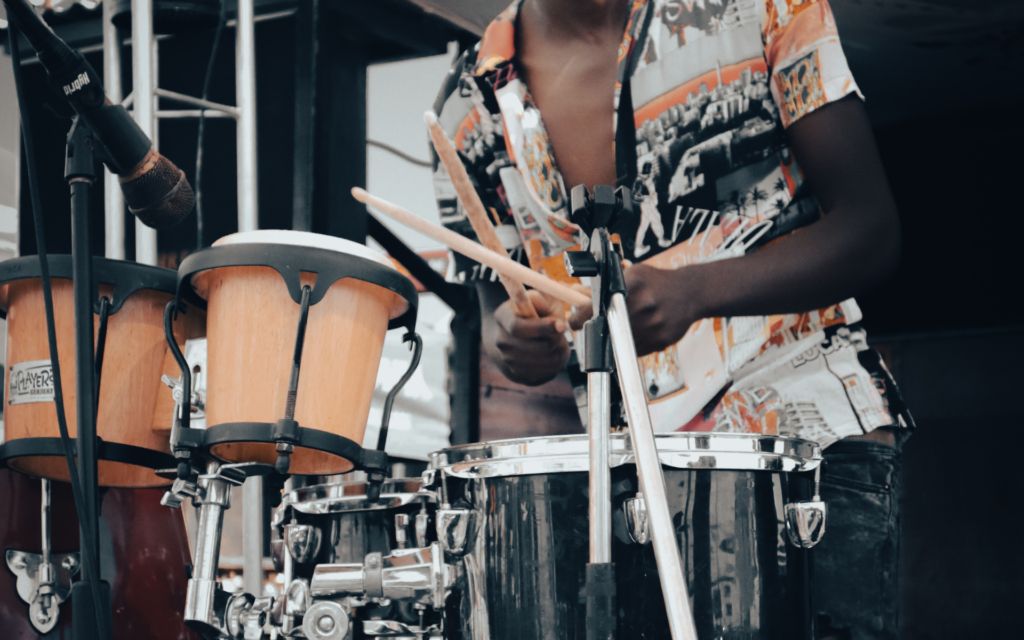I review products independently and only recommend products I would use myself. If you purchase through a link, I may earn an affiliate commission. Learn more.
Djembe hand drums have a rich African history. They are one of the most common types of drums used in drum circles, and they are incredibly fun to play, with tones that range from very deep to strikingly bright.
If you’re playing an intimate acoustic gig, you could use a djembe instead of a drum kit, as djembes are diverse enough to cover most of the needed tones and rhythms.
However, drum circles are the most popular use for djembes, so we’re going to look at the best options for that setting.
In this djembe drums guide, I’ve compared sound, design, build quality, and cost to present the best djembes on the market. I’ll also share some other helpful advice you should consider when looking to buy a new djembe drum.
In a Rush’ Round-Up
How I Tested and Selected the Best Djembes
I regularly play weddings and parties where I perform with a harness-mounted djembe that I use whilst roaming through the crowd.
I recently bought a high-quality Meinl djembe, and before deciding on this one, I looked at several options in order to choose the best one for my needs.
Tonal quality was crucial in my evaluations, emphasizing the richness, clarity, and versatility of each djembe’s sound. I then delved into the construction and materials, to ensure durability and authenticity of tone.
Comfort and playability were also key considerations. I assessed each drum’s ergonomics and tested it to see if it was comfortable on the hands with various playing techniques. Additionally, I also looked at the tuning stability and the ease of tuning adjustments.
Djembe Drums Reviews
Meinl Mahogany Wood Djembe
Meinl Mahogany Wood Djembe Review
The Meinl Mahogany Wood Djembe is an outstanding instrument that produces a wide range of authentic sounds. This djembe is hand-crafted from a solid piece of mahogany and the drumhead is authentic hand-selected goatskin.
Meinl Percussion is one of the world leaders in manufacturing high-quality instruments that also offer fantastic value for money. Meinl is played by many of the world’s top-level drummers and percussionists.
This mahogany wood djembe has a warm, musical voice. It sounds great for any musical application such as drum circles, live shows, or jam sessions.
This djembe also sounds excellent under the microphone for recordings and on stage.
This djembe drum possesses excellent acoustic properties and is able to produce a range of tones. The center of the drum produces a warm and boomy low end whilst the edges of the drum pop with a lively tone.
The authentic goatskin head is secured and tuned by the traditional mali-weave system. This means that the djembe is ready to play straight out of the box, and the pre-tuned pitch is designed to last.
Overall this is my favorite wooden djembe on the market. The sustainably sourced hand-carved mahogany shell has a delightful tone and the pre-tuned goat skin head produces a musical and colorful sound.
This is an impressive djembe drum that is also offered at a very affordable price, so all in all, this is the best djembe to invest in for jam sessions, shows, and group drumming.
Pros
- Perfect for all musical performances
- Sustainably sourced solid mahogany shell
- Includes carry case and 2 year warranty!
Cons
- Not fully handmade
Remo Apex Djembe
Remo Apex Djembe Review
The Remo Apex Djembe is a sleek, lightweight djembe that is a modern take on the classic djembe design.
With a sophisticated and durable design, the Remo Apex is the best djembe on the market if you are looking for a synthetic option.
What I like most about the Remo Apex djembe is that it has a lightweight body along with contemporary tuning lugs that allows me to pitch this djembe easily.
The elegant steel hoop feels great to play and it’s very easy to tune to achieve your desired sounds. The djembe drum does manage to stay in tune very well also.
The imitation synthetic Remo drumhead is not quite as responsive and musical as authentic rawhide djembe skins. However, it does still have a musical tone and is able to produce low bass notes and high pops.
Overall though the sound produced from this Remo djembe is on the brighter end of the spectrum, as opposed to the warmer tones produced by authentic wood djembes.
But the modern design of this djembe allows you to tune it very easily and it’s super lightweight to transport.
This is a high-quality musical instrument that will work very well for a wide variety of musical applications. It has an impressive build quality and it is very durable and comfortable to play.
Pros
- Very easy to tune like a traditional drum
- Lightweight and easy to transport
- Elegant steel hoop feels great to play
Cons
- Synthetic drumhead lacks warmth and tone
- Not a handmade or traditional djembe
Latin Percussion Rope Circle Djembe
Latin Percussion Rope Circle Djembe Review
The Latin Percussion Rope Circle Djembe is a small and affordable drum that produces rich and musical sounds. This lightweight djembe is only 7 inches in diameter, making it especially easy to transport.
This is a very affordable and no-frills djembe that sounds surprisingly musical. It’s ideal for those who want a budget-priced yet well-constructed djembe with high-quality tuning ropes.
The Circle Djembe also features a Perfect-Pitch head that stays perfectly in tune, no matter the weather conditions.
I found this djembe drum to be remarkably compact and musical sounding, and it is suitable for all types of musical activities.
It is the perfect djembe for traveling with. Especially if you are regularly going to group drumming sessions and acoustic jam sessions.
The bargain-priced Latin Percussion Rope Circle Djembe is ideal for beginners as well as songwriters looking to add some percussion to tracks.
Pros
- Best djembe on a budget
- Stays in tune perfectly
- Lightweight and compact design
Cons
- Smaller djembe, although perfect for beginners
Latin Percussion Aspire Tunable Djembe
Latin Percussion Aspire Tunable Djembe Review
The unique and attractive Latin Percussion Aspire Tunable Djembe employs modern mechanical tuning for ease of use. Tuning this djembe is a breeze with the 3/8″ diameter tuning lugs.
I love the design of the Latin Percussion Aspire djembe. It’s a modern take on the authentic African djembe, with a beautiful Siam Oak hardwood shell and goatskin head.
The natural gloss finish combined with the chrome hardware is a fantastic look.
This djembe felt and sounded great when I played it. It is very easy to tune thanks to the modern tuning system and the EZ Curve Rim that supports the lugs.
It has a warm and full-bodied tone and has an excellent tuning range. It really delivers punchy and musical tones that would sound fantastic on recordings as well as live.
This is a highly versatile and beautiful-looking musical instrument that lends itself to an enormous variety of musical applications. It’s one of the best djembe drums with stunning sounds and looks.
Pros
- Makes the perfect decorative piece
- Authentic djembe hand made in Africa
- Supports drum makers and preserves local culture
Cons
- Beginner level sound quality
- Expensive djembe considering sound
Latin Percussion Rope Tuned Djembe
Latin Percussion Rope Tuned Djembe Review
The Latin Percussion Rope Tuned Djembe is an authentic African-inspired djembe drum with a Siam Oak shell that produces an amazing level of volume along with a rich bass tone.
This instrument is beautifully designed to deliver the ultimate djembe drumming experience. The drum looks and sounds beautiful, and the Ever-Tune rope tuning system is functional and easy to use.
The sound of this djembe is warm and resonant. The solid hardwood shell and natural goatskin together produce wonderful open tones and a wide range of frequencies.
The bass notes are strong and powerful whilst the edge produces clean and crisp high notes.
If you want a large djembe drum that is perfect for live performances, group drum circles, or even a distinctive feature for display at home, then this is one of the best djembes available.
Pros
- Attractive sonically and visually
- Warm, full-bodied tone
- Excellent build quality
Cons
- Rope tuning can be challenging
- Rather expensive
Djembe Buying Guide
Djembes are incredibly expressive for drums that only have a single surface. Professional djembe players can play some amazing rhythms on them.
Beginner players can play some great rhythms and beats as well once they have the correct hand techniques mastered.
When looking for the best djembe drums to buy, you should check how it’s tuned, what its dimensions are, what its shell is made from, and how good its build quality is.
Things to Consider When Buying a Djembe
Brands
Latin Percussion and Meinl Percussion are two of the best djembe drum brands, so it’s guaranteed that you can get a good product from them.
Pearl and Remo also sell a few djembes that are high in quality. There are several other good brands, but their products aren’t as accessible worldwide.
Rope vs mechanical tuning
Rope djembes are the traditional option. They look more authentic, and most djembe players prefer them. Mechanically-tuned djembes are easier to get great sounds out of, though, making them better for beginners.
Aesthetics
Some djembes have traditional appearances, while others have modern or funky finishes. Choose which look you’d prefer to narrow down your buying decision.
What Features to Look for in a Djembe
Rope vs Lug Tuning
The two main types of djembes are rope-tuned and mechanically tuned djembes. Rope djembes are the traditional design, and they have a series of tuning ropes that attach the drumhead to the wooden shell.
Mechanically tuned djembes use hardware lugs to attach the drumhead to the shell. They’re a lot easier to tune, as you simply need to twist the lugs to tighten or loosen the drumhead.
Mechanically tuned djembes have higher-pitched tones with a more aggressive attack.
Rope djembe drums are harder to tune, but they produce more authentic sounds. They’re more affordable, for the most part, and the traditional look is a lot more appealing than the industrialized look of a mechanically tuned djembe.
Size
The size of a djembe drum will affect how it feels to hold when you play it. It will also affect the tones that it produces.
The taller a djembe is, the more resonance it will have. This will make it louder as well. However, it can feel uncomfortable to hold for certain people. Tall djembes are typically more expensive. Djembes with depths of 20” to 25” would be considered tall.
Shorter djembes are better for beginners or young children, thanks to their size. They’re more affordable too, but they don’t have as rich tones. Djembes with heights of 16” or lower would be considered short.
Some djembes are as short as 8”. These small djembes only produce a single tone as their wooden shell isn’t large enough to exhibit a wide tonal range. Mini djembes are usually used as decorative pieces, as they’re very musically limited.
Shell Type
All available djembes either have natural wood or synthetic shells. These shells usually go together when it comes to rope and mechanical tuning.
Rope djembes have wooden shells, and mechanically tuned djembes have synthetic shells.
Synthetic shells are a lot more durable. They’re also easier to play and get a range of tones from.
This makes synthetic djembes the best djembe drum type for beginner players who haven’t developed solid technique yet.
Wooden djembes aren’t as durable, as they get scratched quite easily. However, they sound a lot better with their warm and natural tones. It’s just a bit harder to create those tones for beginner djembe players.
In terms of pricing, most synthetic djembes are slightly pricier than wooden ones. There are some exotic woods used for certain djembes, though, and those come at a high cost.
Build Quality
Inexpensive djembes feel quite cheap when you play them. Companies use cheaper materials to make them, and it’s noticeable when you compare them to higher-quality djembes.
The higher the price of a djembe, the better its build quality is. If it’s a rope-tuned djembe, the ropes feel thicker and more secure.
If it’s a mechanically tuned djembe, the lugs are sturdier and they stay in place for longer. This means that the djembe stays in tune for longer.
The best djembe drums are also easier to tune as their design brings out better tones.
Djembe FAQs
What wood types are djembes made from?
The most common wood types used for djembe drum construction include mahogany, bubinga, ash, and bamboo. Strong, heavy woods produce a deep tone with excellent sustain.
Different woods have varying degrees of durability and quality, which can affect the tone of your drum’s sound and its longevity over time. While some woods are more affordable than others, their quality can impact the overall performance and appearance of your instrument.
The dense grain of the material makes it durable and resistant to cracking or warping when exposed to moisture. This type of wood is typically used in the body of the drum.
Is a Djembe Easy to Learn?
Yes, djembes are easy to learn as they have a very low barrier to entry. You simply need to learn a few hand structures to play patterns, and then you need to learn how to hit a djembe to make different sounds.
Once you have those techniques down, you only need to work on your rhythmic ability. Djembes are a lot easier to learn than other instruments that have notes on a scale and complicated finger positioning.
How Much Should You Spend on a Djembe?
The price paid for a djembe drum depends on what you’re going to use it for. If you’re getting one to play in a drum circle, you shouldn’t spend as much as you would for the best djembe drum that’ll be used for a professional gig.
Playing in a drum circle is about the experience and the people around you, so you don’t need the most pristine tones. A professional gig, on the other hand, will sound the best when you’re using the best gear possible.
Where are Djembe Drums Used?
Djembe drums originated in West Africa, and they’re still used in a lot of music from those regions. They’re popular drums to be used in drum circles as well, which involves a group of people playing drums in a circle to share rhythms and feel more connected.
Djembes are sometimes used for acoustic gigs as supplements for a full drum kit or percussion rig. The edge of a djembe sounds like a snare drum, while the center of a djembe sounds like a kick drum.





